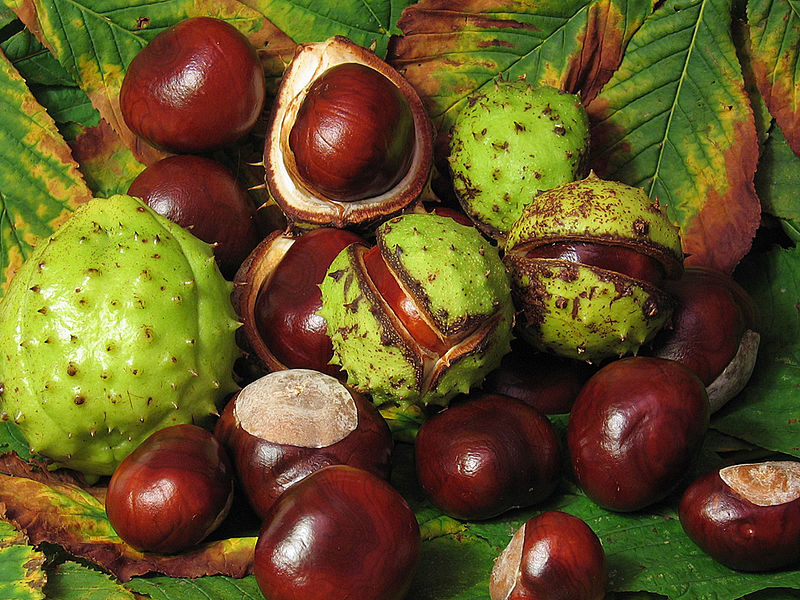
Climatic requirements: chestnut is based on winter to -30 C. Nevertheless, it is sensitive to the first frost in late autumn in spring. It grows in places with an average rainfall of 600-1600 mm. Too much precipitation during the flowering period will affect fertilization and does not like excessive rain. Excessive precipitation leads to loss of leaves due to fungal disease. Soil: because chestnut root is rooted, the soil must be loose and permeable. He likes potassium-rich soils of more volcanic origin. In the valleys of the pit, where the cold is going, chestnut should not be installed. The slopes are perfect for the garden. Production: Dipping chestnut vegetative dipping method, using the rooting method of flowers. The most used and reliable method of vaccination. Folding: in a wet and cold (0-40C) environment is enough for a period of 3 months. After a year, the row is 70x80 cm with a step of 30 cm. Seeds are planted in untreated soil with a depth of 8-10 cm to increase the seed germination rate and the seeds are covered with a mortar layer of 4-5 cm. 1 part of the soil is used 1 part of the manure burned. Methods and time of vaccination: The most commonly used method is to discard vaccination. When vaccinating artificial trees, pest vaccines are used. Planting range and technique: Planting range of 10-12 m is usually applied to chestnuts. Trees can be up to 15 m in the normal range and under operating conditions. The square triangular shape can be applied according to the structure of the earth. The planted pits are open at a depth of 40x50 cm. 150-200 grams of complex fertilizer is given to the pits. This fertilizer is thrown into the pits and mixed, then several blades are thrown into the mixture. If the roots touch the fertilizer, the roots of the seedlings can be damaged and dried. Trimming: The most used system is the climate branching system. When a tree reaches a certain height in this system, which dominates at the top, the peak branches are trimmed.
a) The main branches are selected from strong branches to cover the four directions of the tree.
b) The main branches should not grow very close to each other or should not go out from one place.
c) Since the angular branches tend to break, they must have an angle of 50-70 degrees.
d) Excessive reductions are not made on annual shoots, because it will cause the formation of continuous shoots to delay the fruit. To prevent growth in the necessary places, you can do it by picking up the tip.
e) Excessive pruning on young trees can cause stunted growth, which can lead to low yields. Twigs close to the ground are gradually removed. During the first planting, seedlings are watered 2-3 times depending on the soil moisture. In subsequent years, watering is very harmful.
a) In places with a large slope, you need to make sec.
b) Mulching is the most effective way to protect soil moisture. Keeps soil moisture. No weed development. Since mulching is very expensive, it is more useful to lay the remains of studded ball evenly under the tree after harvesting. Remember the difficulty is gathering time. This disadvantage is also eliminated by placing nylon or fabric under the trees.
HARVESTING: Harvest time, depending on the variety in early September to mid-October. When the spikes open slightly, fruits that appear in their natural color show harvest time. Fruits do not ripen at the same time. Therefore, if harvesting is done in the form of gathering fruits falling on the ground, fruits should be harvested in daylight, not waiting in daylight. If trees are collected by polishing the poles, the trees are produced at a time when growth approaches the average. However, this process causes branches to break and leaves to spill. Collecting chestnuts is an expensive and difficult task. Thus, the capsules fall spontaneously when the crop is ripe, it is important to choose the simplest type.
It penetrates the skin of the fruit and enters it, feeding it. Dumping dirt into the fruit decreases the fruit debris and loses the market value of the fruit. This leads to the fact that the fruits that they are damaged are completely discharged and lose their market and foreign sales values. He gives offspring year. In general, the larvae that did not complete their development at harvest time, they complete their development during warehouses or sales and they pick fruit.
a-Wormwood, separated at the stages of chestnut processing and in the garden, should be immediately destroyed.
b-The concrete and wall phases of chestnut processing should be well plastered. Chestnut bags for sale must be stored on the concrete floor instead of the ground.
c-Buried places in months after the sale of the product; especially in June, worms must often collapse.
d-The base of the burials and surroundings at a height of 10-20 cm must be made of concrete, after the sale, the worms collected on the concrete must be destroyed.
e-To ensure that all worms are found in graves, at least 1.5 to 2 months between harvesting and selling should be left on a concrete cellar.
For the cure; shortly before harvesting, the product is buried buried in buried soil, without burying it, spray the healing solution of the soil. 20-25 days after this spraying, the solution is moistened in the burial. 2 spray should be applied.